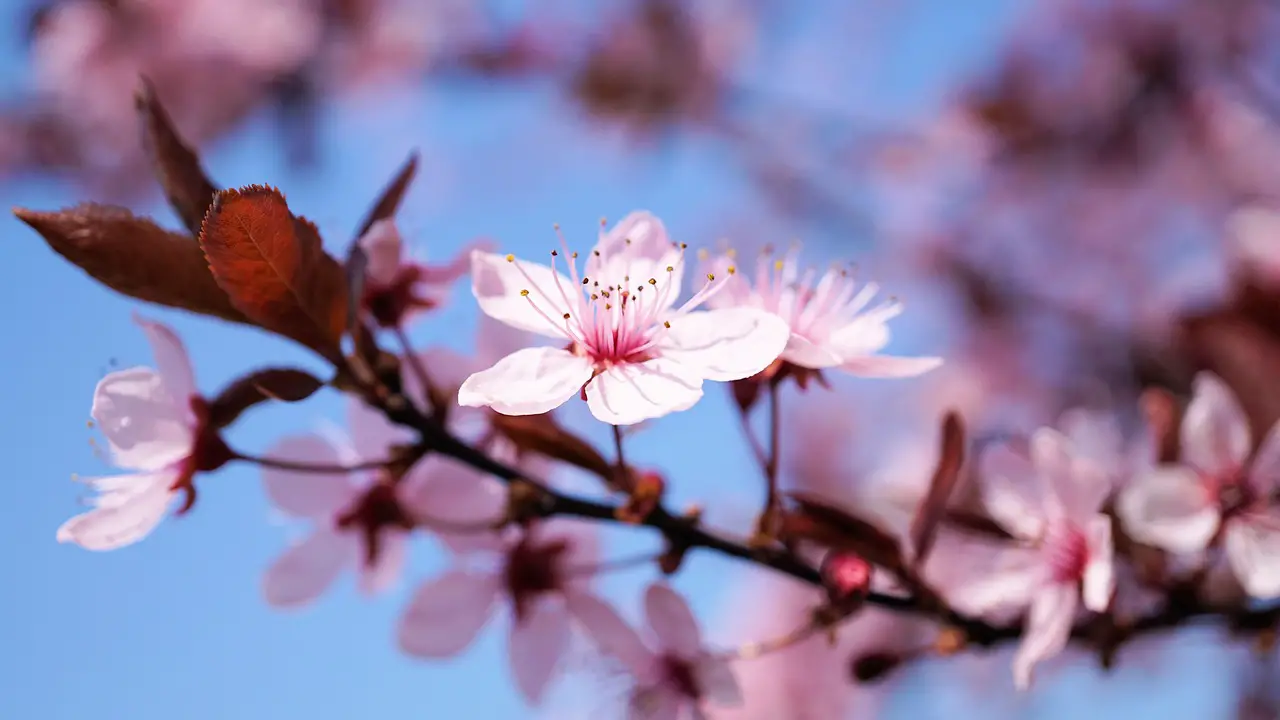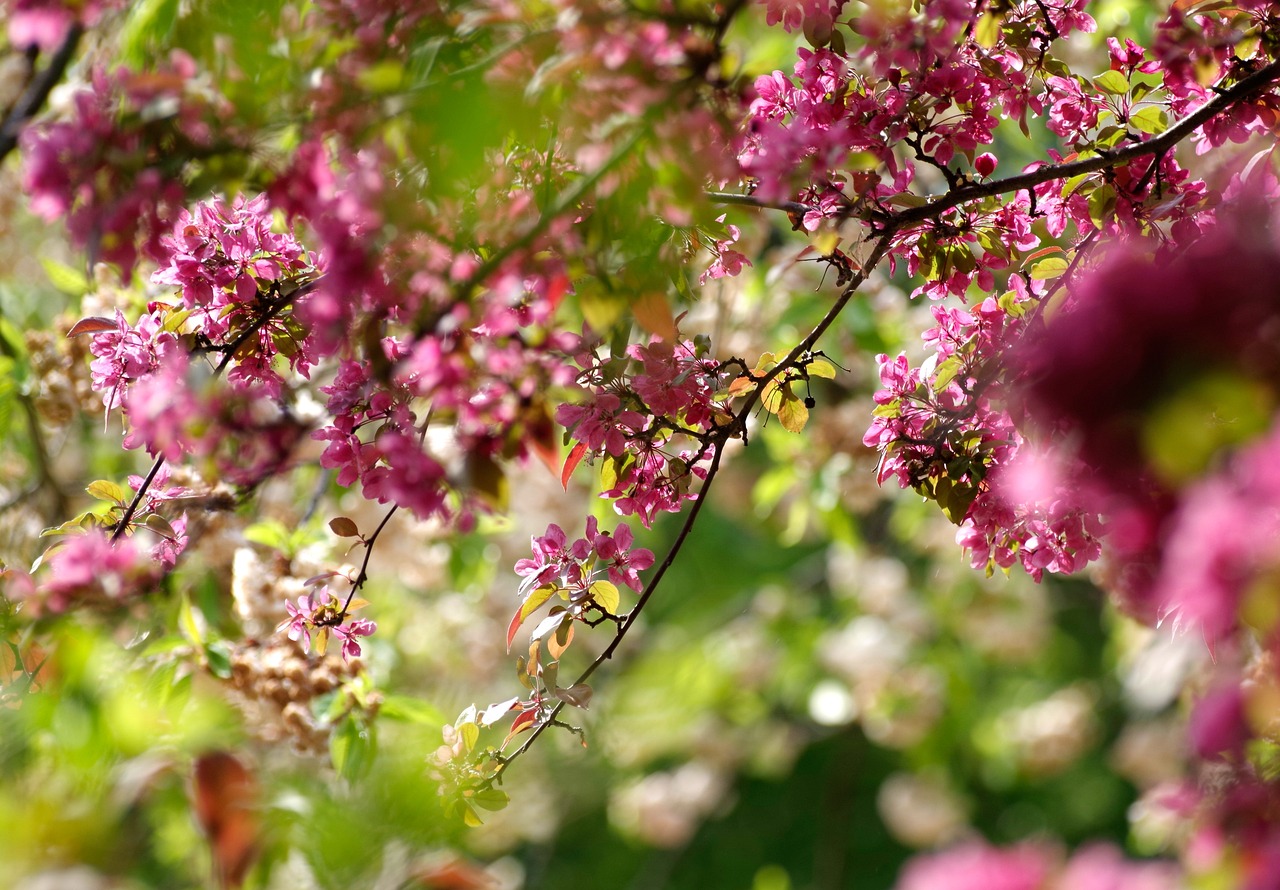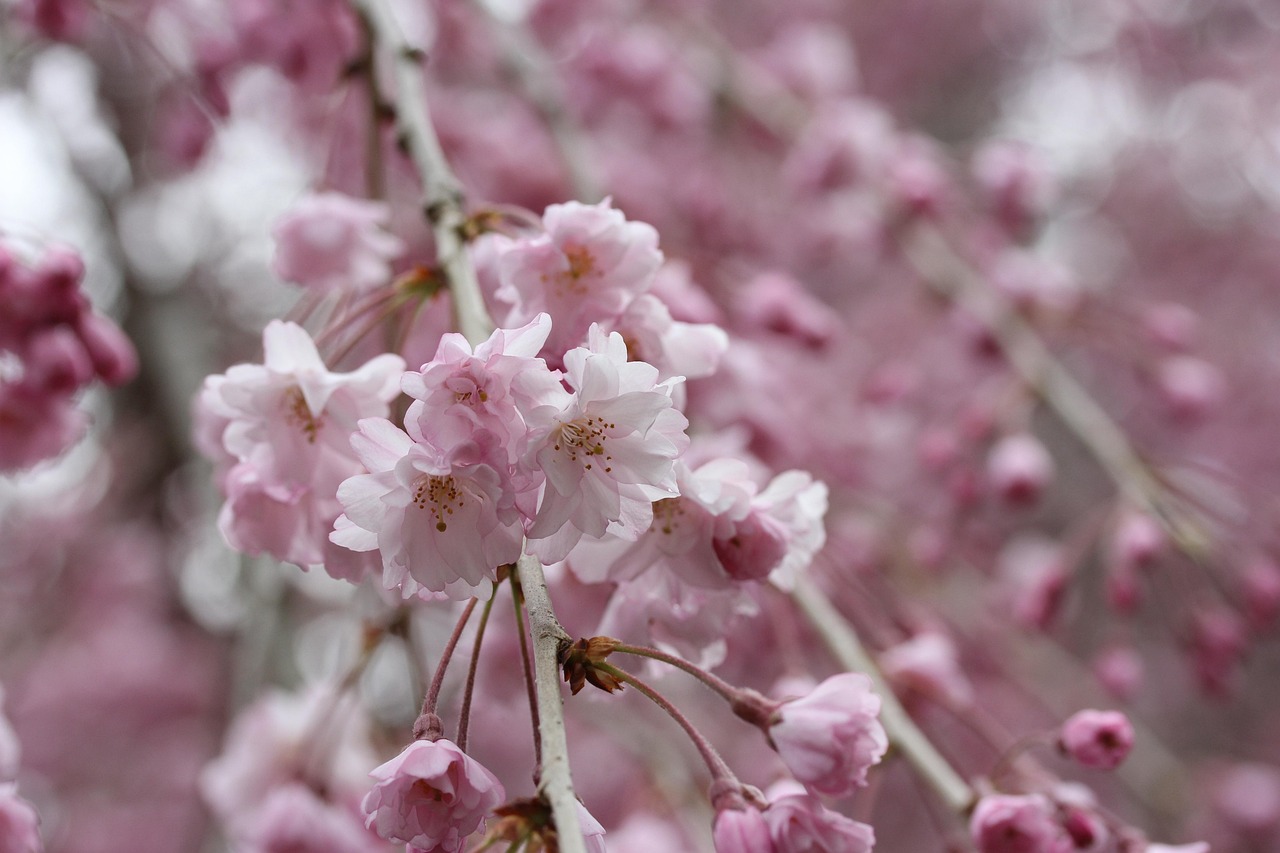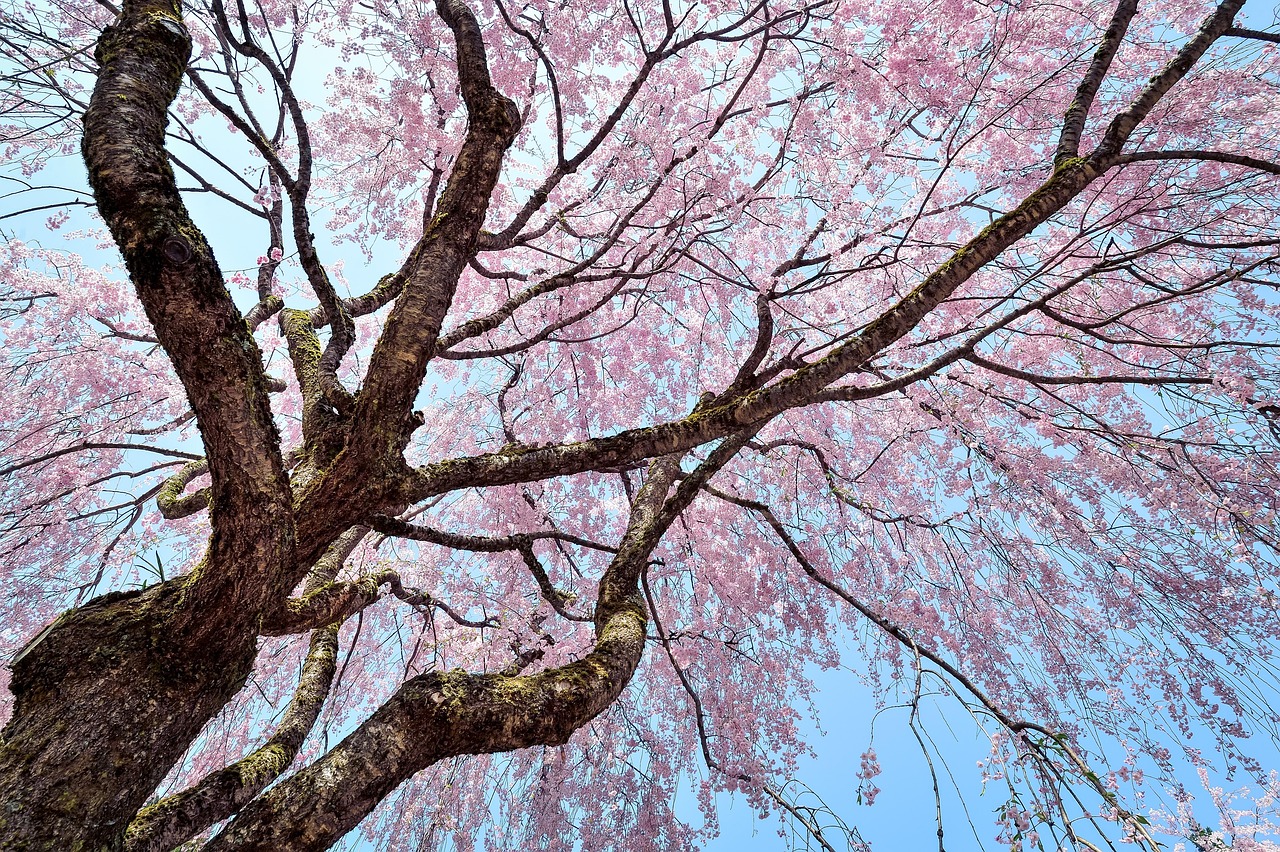The Weeping Cherry Tree typically grows at a rate of 1 to 2 feet per year, depending on the growing conditions. Proper care, soil quality, and climate can influence this growth rate significantly.
Understanding Weeping Cherry Trees
The Weeping Cherry Tree, known scientifically as Prunus subhirtella ‘Pendula’, is a popular ornamental tree that captivates many gardeners and landscape designers. Its graceful, arching branches and delicate pink flowers create a stunning visual impact in landscapes. This tree is especially cherished for its springtime blooms, which herald the arrival of warmer weather.

In addition to its aesthetic appeal, the Weeping Cherry Tree also serves practical purposes in gardens. It can provide shade, enhance privacy, and attract pollinators like bees and butterflies. Knowing its growth rate is essential for gardeners who want to incorporate this tree into their landscapes effectively.
Growth Rate Overview
The growth rate of a Weeping Cherry Tree can vary based on several factors, including soil quality, water availability, and climate conditions. On average, these trees grow between 1 to 2 feet each year. This moderate growth makes them suitable for various ornamental plantings.
Understanding the growth rate is vital for planning how to position these trees within a landscape. They can reach heights of 20 to 30 feet at maturity, with a spread of 15 to 25 feet. This information helps gardeners determine the appropriate space needed for each tree, ensuring they have enough room to flourish without overcrowding nearby plants.

Factors Affecting Growth Rate
Several factors influence the growth rate of Weeping Cherry Trees:
- Soil Quality: Well-draining soil rich in organic matter promotes healthy growth.
- Watering: Consistent watering during dry spells is crucial for young trees.
- Sunlight: These trees thrive in full sun but can tolerate partial shade.
- Climate: Weeping Cherry Trees prefer temperate climates with distinct seasons.
Each of these factors plays an essential role in determining how quickly the tree establishes itself and grows. Gardeners should take these aspects into account when planting and caring for their Weeping Cherry Trees.
Planting and Care Tips
To ensure optimal growth rates for your Weeping Cherry Tree, proper planting and care are necessary. Here are some essential tips to follow:

- Selecting the Right Location: Choose a spot that receives full sunlight for at least six hours a day.
- Preparing the Soil: Amend the soil with compost or well-rotted manure to enhance fertility.
- Watering: Water regularly during dry periods, particularly during the first few years after planting.
- Fertilizing: Use a balanced fertilizer in early spring to support growth.
- Pruning: Prune annually to remove any dead or crossing branches and to maintain shape.
Following these guidelines can help maximize the health and growth of your Weeping Cherry Tree. With the right care, these trees will thrive and provide beauty for many years.
Common Varieties
There are several varieties of Weeping Cherry Trees that gardeners can choose from. Each variety has unique characteristics that may affect its growth rate and appearance:
| Variety | Growth Rate | Mature Height | Mature Spread |
|---|---|---|---|
| Prunus subhirtella ‘Pendula’ | 1-2 ft/year | 20-30 ft | 15-25 ft |
| Prunus serrulata ‘Kanzan’ | 1-2 ft/year | 25-30 ft | 20-25 ft |
| Prunus subhirtella ‘Rosea’ | 1-2 ft/year | 15-20 ft | 10-15 ft |
Selecting the right variety is important for achieving the desired aesthetic effect and ensuring compatibility with your landscape. Each variety brings its charm while maintaining similar growth expectations.
The Weeping Cherry Tree is an excellent choice for those looking to enhance their gardens with stunning visual elements. By understanding its growth rate and care requirements, gardeners can enjoy these beautiful trees for generations.

Environmental Conditions for Optimal Growth
For Weeping Cherry Trees to thrive, specific environmental conditions must be met. These conditions significantly influence their growth rate and overall health. Understanding these factors can help gardeners create the ideal environment for these trees.
Soil Requirements
Weeping Cherry Trees prefer well-draining soil rich in organic matter. The following soil characteristics are vital for healthy growth:
- pH Level: A slightly acidic to neutral pH (between 6.0 and 7.0) is preferred.
- Drainage: Good drainage is crucial to prevent root rot. Sandy loam or loamy soil types are ideal.
- Nutrients: Soil should be enriched with organic matter, such as compost, to provide essential nutrients.
Before planting, it is advisable to test the soil to ensure it meets these requirements, allowing for amendments if necessary.
Sunlight Exposure
Sunlight is another critical factor in the growth of Weeping Cherry Trees. These trees thrive in:
- Full Sun: They require at least six hours of direct sunlight daily for optimal growth and flowering.
- Partial Shade: While they can tolerate some shade, reduced sunlight may lead to slower growth and fewer blossoms.
When selecting a planting location, aim for an area that receives ample sunlight throughout the day.
Watering Needs
Proper watering is essential in the early stages of growth and continues to be important as the tree matures. Key points include:
- Young Trees: Newly planted Weeping Cherry Trees need consistent moisture. Water them deeply once or twice a week during dry spells.
- Mature Trees: Established trees are more drought-resistant but should still be watered during prolonged dry periods.
- Drainage Considerations: Ensure that the area around the tree does not become waterlogged, as this can harm the roots.
Pest and Disease Management
Like all plants, Weeping Cherry Trees are susceptible to certain pests and diseases. Being proactive in managing these threats is vital for maintaining tree health and growth rate.
Common Pests
The following pests are frequently associated with Weeping Cherry Trees:
- Aphids: These small insects can cause leaf curling and stunted growth. Regular inspections and insecticidal soap can help control them.
- Spider Mites: These pests thrive in dry conditions and can cause yellowing leaves. Increasing humidity around the tree can reduce their population.
- Cherry Fruit Flies: They can damage fruit if present. Traps and organic insecticides can help mitigate this problem.
Diseases to Monitor
Certain diseases can affect the health of Weeping Cherry Trees. The following are common concerns:
- Crown Gall: This bacterial disease causes growths on roots and stems. Removing infected plants and ensuring good drainage can prevent spread.
- Powdery Mildew: A fungal disease that appears as a white powder on leaves. Proper spacing and airflow can help prevent this issue.
- Leaf Spot: Fungal pathogens can cause dark spots on leaves. Fungicides and removing diseased leaves can help control this disease.
The Role of Fertilization
Fertilization plays a significant role in supporting the growth rate of Weeping Cherry Trees. A balanced fertilization schedule can enhance their development. Key considerations include:
- Timing: Apply fertilizer in early spring before new growth begins.
- Type of Fertilizer: A balanced fertilizer (such as 10-10-10) can provide essential nutrients without over-fertilizing.
- Application Method: Follow the manufacturer’s instructions for application rates and methods to avoid damaging the tree.
By understanding these environmental conditions and management practices, gardeners can ensure their Weeping Cherry Trees reach their full potential in both growth rate and ornamental beauty.
Seasonal Care for Weeping Cherry Trees
Seasonal care is essential for the health and growth of Weeping Cherry Trees. Different seasons require specific attention to ensure that these trees thrive throughout the year. Understanding seasonal changes helps gardeners provide the right care at the right time.
Spring Care
Spring is a crucial time for Weeping Cherry Trees as they emerge from dormancy. Key activities during this season include:
- Pruning: Late winter or early spring is the best time to prune. Remove any dead or damaged branches to promote healthy growth.
- Fertilization: Apply a balanced fertilizer as new growth begins to support the tree’s development.
- Watering: Ensure consistent watering, especially if rainfall is insufficient. Young trees require extra attention to hydration.
These practices help prepare the tree for a successful growing season filled with beautiful blossoms.
Summer Care
During the summer months, Weeping Cherry Trees need ongoing attention to maintain their health. Key summer care practices include:
- Irrigation: Monitor soil moisture and water deeply during dry spells. Avoid shallow watering, as it can lead to weak root systems.
- Pest Management: Regularly check for pests such as aphids and spider mites. Implement control measures as necessary to prevent infestations.
- Weed Control: Keep the area around the tree free of weeds, which can compete for nutrients and moisture.
Summer care ensures that Weeping Cherry Trees remain vigorous and healthy as they grow.
Fall Care
As temperatures cool in the fall, specific care practices can help prepare Weeping Cherry Trees for winter. Important fall activities include:
- Mulching: Apply a layer of mulch around the base of the tree to retain moisture and insulate roots against cold temperatures.
- Watering: Continue watering until the ground freezes, ensuring the tree has adequate moisture before winter dormancy.
- Leaf Cleanup: Rake and dispose of fallen leaves to reduce the risk of diseases that thrive on decomposing plant material.
Caring for Weeping Cherry Trees in the fall helps them enter winter in a healthy state.
Winter Care
Winter presents unique challenges for Weeping Cherry Trees. Proper care during this season is essential to protect them from cold damage. Key winter practices include:
- Protective Wrapping: For young trees, consider wrapping trunks with burlap or tree guards to protect against frost and critters.
- Snow Removal: Gently remove heavy snow buildup from branches to prevent breakage. Use caution to avoid damaging the limbs.
- Monitoring: Regularly check for signs of pests or diseases during mild winter days. Early detection can prevent more significant issues later.
By following these seasonal care practices, gardeners can ensure that their Weeping Cherry Trees remain healthy and vibrant throughout the year.
Aesthetic Uses in Landscaping
The Weeping Cherry Tree is highly valued in landscape design due to its stunning visual appeal. Its unique form and flowering capabilities make it a favorite among gardeners and landscapers alike. Here are some ways to utilize this tree effectively in ornamental plantings:
focal Points in Gardens
Weeping Cherry Trees can serve as striking focal points in gardens. Their cascading branches create a dramatic effect, drawing attention and enhancing the overall landscape design. Consider the following tips:
- Placement: Position the tree where it can be viewed from multiple angles, allowing its beauty to be appreciated from various vantage points.
- Companion Planting: Pair with lower-growing perennials or shrubs that bloom at different times to extend visual interest throughout the seasons.
- Lighting: Incorporate garden lighting to highlight the tree’s structure and flowers during evening hours.
Garden Themes
The Weeping Cherry Tree fits well into various garden themes, adding elegance and charm. Some popular themes include:
- Cottage Gardens: Weeping Cherry Trees complement the whimsical look of cottage gardens with their romantic blooms.
- Japanese Gardens: They are perfect for Japanese-inspired landscapes, symbolizing beauty and transience.
- Formal Gardens: In formal settings, their graceful form adds sophistication and symmetry.
By considering these aesthetic uses, gardeners can maximize the impact of Weeping Cherry Trees in their landscaping projects, creating visually stunning spaces that thrive throughout the seasons.
Maintenance Tips for Long-Term Health
To ensure that Weeping Cherry Trees remain healthy and vibrant over the years, regular maintenance is essential. Following these maintenance tips can help extend the life and beauty of these ornamental trees:
Regular Inspections
Conducting regular inspections of your Weeping Cherry Tree can help identify any potential issues early on. Look for signs of:
- Pest Infestations: Monitor for pests such as aphids or spider mites. Early detection allows for timely intervention.
- Diseases: Watch for discoloration in leaves or unusual growths that may indicate disease.
- Structural Integrity: Check the tree for any broken or weak branches that may need pruning to prevent damage.
Seasonal Mulching
Applying mulch around the base of the tree can provide numerous benefits:
- Moisture Retention: Mulch helps retain soil moisture, reducing the need for frequent watering.
- Temperature Regulation: It insulates roots during temperature extremes, protecting them from winter cold and summer heat.
- Weed Suppression: A thick layer of mulch can inhibit weed growth, reducing competition for nutrients.
Soil Health Monitoring
Maintaining healthy soil is crucial for the growth and development of Weeping Cherry Trees. Consider the following practices:
- Soil Testing: Regularly test soil pH and nutrient levels to ensure they remain within optimal ranges.
- Organic Amendments: Incorporate organic matter, such as compost, into the soil to improve fertility and structure.
- Aeration: Aerate soil periodically to enhance root growth and improve water infiltration.
Final Thoughts
The Weeping Cherry Tree is a stunning addition to any landscape, admired for its graceful form and beautiful blooms. Understanding its growth rate, care requirements, and optimal environmental conditions can help gardeners cultivate these trees successfully. With proper attention to seasonal care, pest management, and maintenance, Weeping Cherry Trees can flourish and provide beauty for many years.
This ornamental tree not only enhances the aesthetic appeal of gardens but also contributes to biodiversity by attracting pollinators. By selecting the right variety and implementing effective landscaping techniques, gardeners can create visually engaging environments that celebrate the natural beauty of Weeping Cherry Trees.
As you embark on your journey with Weeping Cherry Trees, remember that patience and consistent care are key. With time, these trees will reward you with breathtaking displays of blossoms each spring, enriching your garden space and providing a serene atmosphere for you and your family to enjoy.
